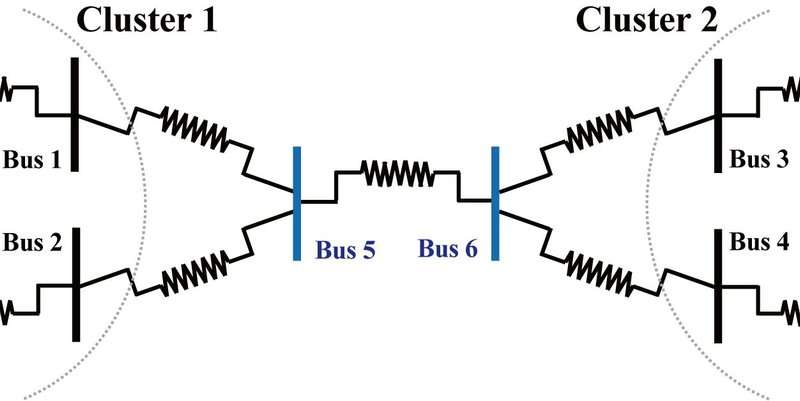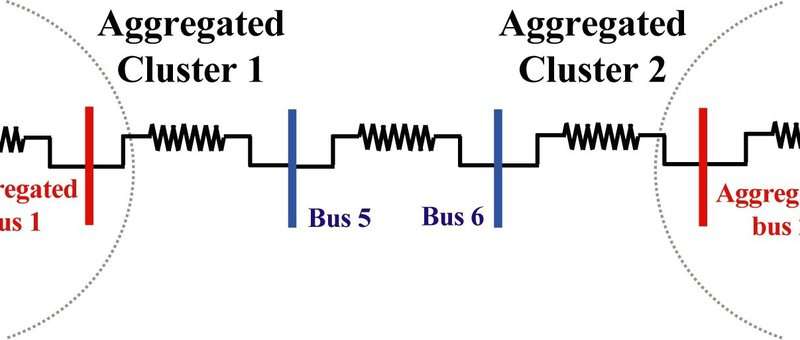
A joint research team from Tokyo Institute of Technology (Tokyo Tech) and North Carolina State University has clarified the fundamental principles for achieving the synchronization of power generator groups in power networks, which is essential for the stable supply of electric power. Based on this principle, the team developed a method for constructing an aggregated model of a power network that can efficiently analyze and control the behavior of generator groups (including rotor phase angles and connection point voltages) with complex connection to a power grid.
It is known that the synchronization phenomenon of generator groups such as at multiple thermal power plants is closely related to the stable supply of electric power. Specifically, if a generator is out of synchronization, that generator and its surrounding generators will not be able to operate stably, and in worst cases, serious accidents such as power outages can occur.
In addition, energy problems caused by global warming and the depletion of fossil fuels have become more serious on a global scale. Therefore, from the viewpoint of reducing carbon dioxide and systematic use of energy, high expectations have been placed on renewable energy such as that typified by photovoltaic (PV) generation. When large-scale PV generation equipment and power storage equipment are introduced, in addition to power generation such as conventionally used thermal power, hydraulic power and nuclear power, it is necessary to consider power charge and discharge by PV-generated output and storage batteries in order to maintain equilibrium between supply and demand. However, the amount of power from PV generation fluctuates since there is uncertainty related to changes in weather and changes in solar radiation volume according to the time zone. This makes it more difficult to maintain the synchronization of generator groups. The need to analyze synchronization is greater than ever.
With conventional analysis, a major approach is based on numerical simulation. There are no studies that theoretically clarify the basic principles for how to properly synchronize generator groups according to the network structure of power transmission. There is an urgent need to build a power supply and demand framework that efficiently utilizes power storage equipment to allow for the uncertainty of PV generation and demand predictions.

Overview of Research Achievement
Assistant Professor Takayuki Ishizaki, Professor Jun-ichi Imura of Tokyo Tech, and Associate Professor Aranya Chakrabortty of the NSF ERC FREEDM System Center at North Carolina State University worked on multiple studies including power network modeling, stability analysis, and stabilization control from the perspective of graph theory. They have clarified that the symmetry of the network in graph theory is the fundamental principle for realizing the synchronization of generator groups at thermal power plants integrated with power grids (connected to a network).
The behavior of generators connected through a network in a power grid is represented by complex equations (differential algebraic equations) that combine differential equations and algebraic equations. The differential equations express “behavior of generators” derived from Newton’s second law of motion, and the algebraic equations express “power balance at power grid connection points” derived from Ohm’s law and Kirchhoff’s law. Analysis of these differential algebraic equations was generally performed by transformation into a mathematically equivalent differential equation through a simplification method called the Kron reduction. However, since the algebraic equation representing the power grid is eliminated by deleting the redundant variable representing the connection point voltage, it was not suitable for analyzing the relationship between the network structure of the power grid and the behavior of the generator.
To resolve this issue, they analyzed the network structure of the power grid contained in the algebraic equations from the viewpoint of symmetry based on an understanding of graph theory. Specifically, by analyzing the behavior of the generator without eliminating the algebraic equations, they discovered that the symmetry of the power grid (Figure 1) is the basic principle for realizing synchronization of generator groups. In addition, based on a new idea of simultaneously integrating generator groups that show synchronous behavior and the power grid that couples these, it became possible to mathematically and physically construct a feasible aggregated model (Figure 2).
It is expected that this achievement will result in a basis for developing analysis and control methods for realizing stable power supply to large and complex electric power systems. In the future, Professor Imura says that it aims to develop more complex electric power systems including converters, and to establish a theory to approximate the synchronization of generator groups.
